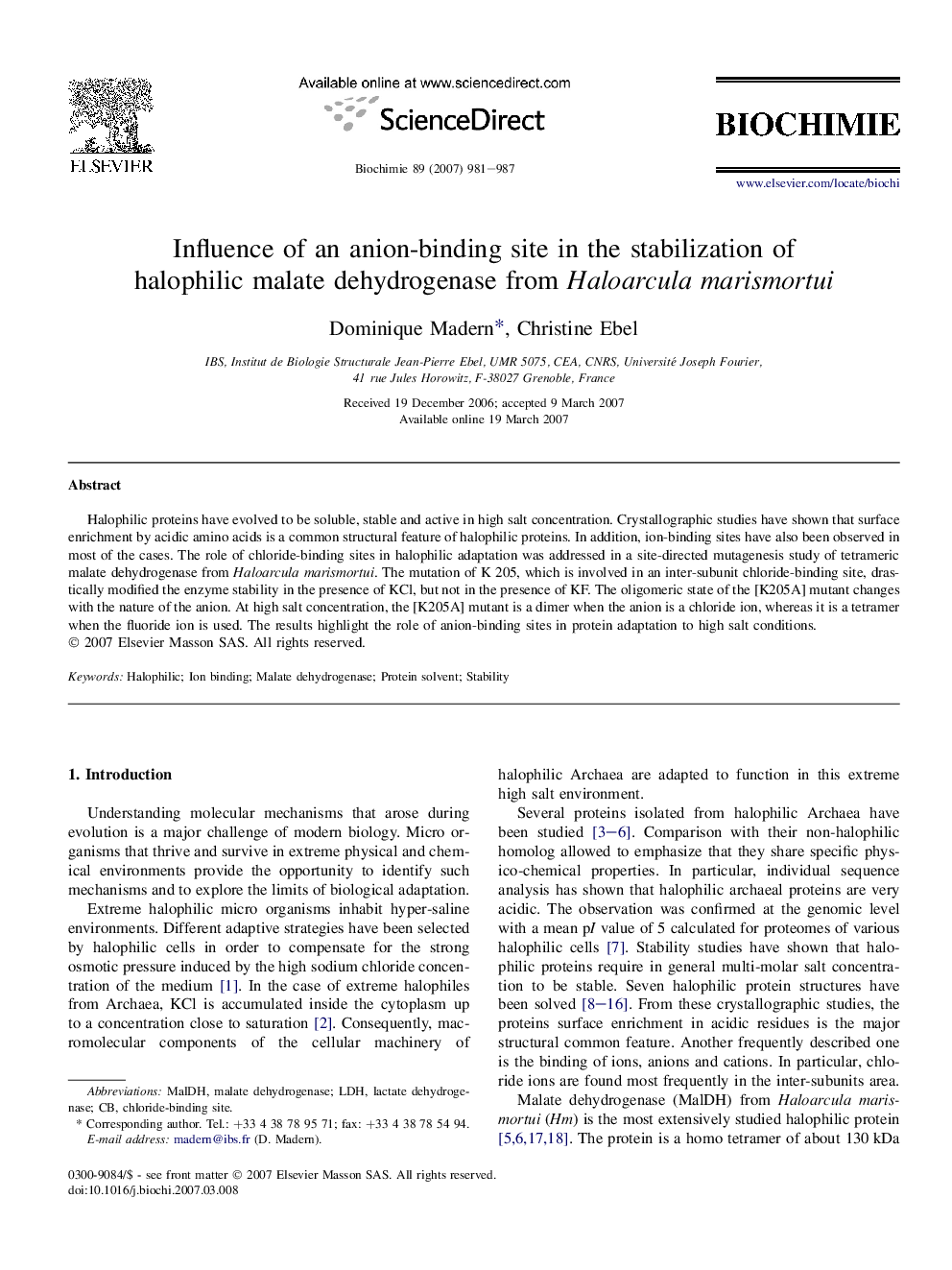| Article ID | Journal | Published Year | Pages | File Type |
|---|---|---|---|---|
| 1953019 | Biochimie | 2007 | 7 Pages |
Halophilic proteins have evolved to be soluble, stable and active in high salt concentration. Crystallographic studies have shown that surface enrichment by acidic amino acids is a common structural feature of halophilic proteins. In addition, ion-binding sites have also been observed in most of the cases. The role of chloride-binding sites in halophilic adaptation was addressed in a site-directed mutagenesis study of tetrameric malate dehydrogenase from Haloarcula marismortui. The mutation of K 205, which is involved in an inter-subunit chloride-binding site, drastically modified the enzyme stability in the presence of KCl, but not in the presence of KF. The oligomeric state of the [K205A] mutant changes with the nature of the anion. At high salt concentration, the [K205A] mutant is a dimer when the anion is a chloride ion, whereas it is a tetramer when the fluoride ion is used. The results highlight the role of anion-binding sites in protein adaptation to high salt conditions.
